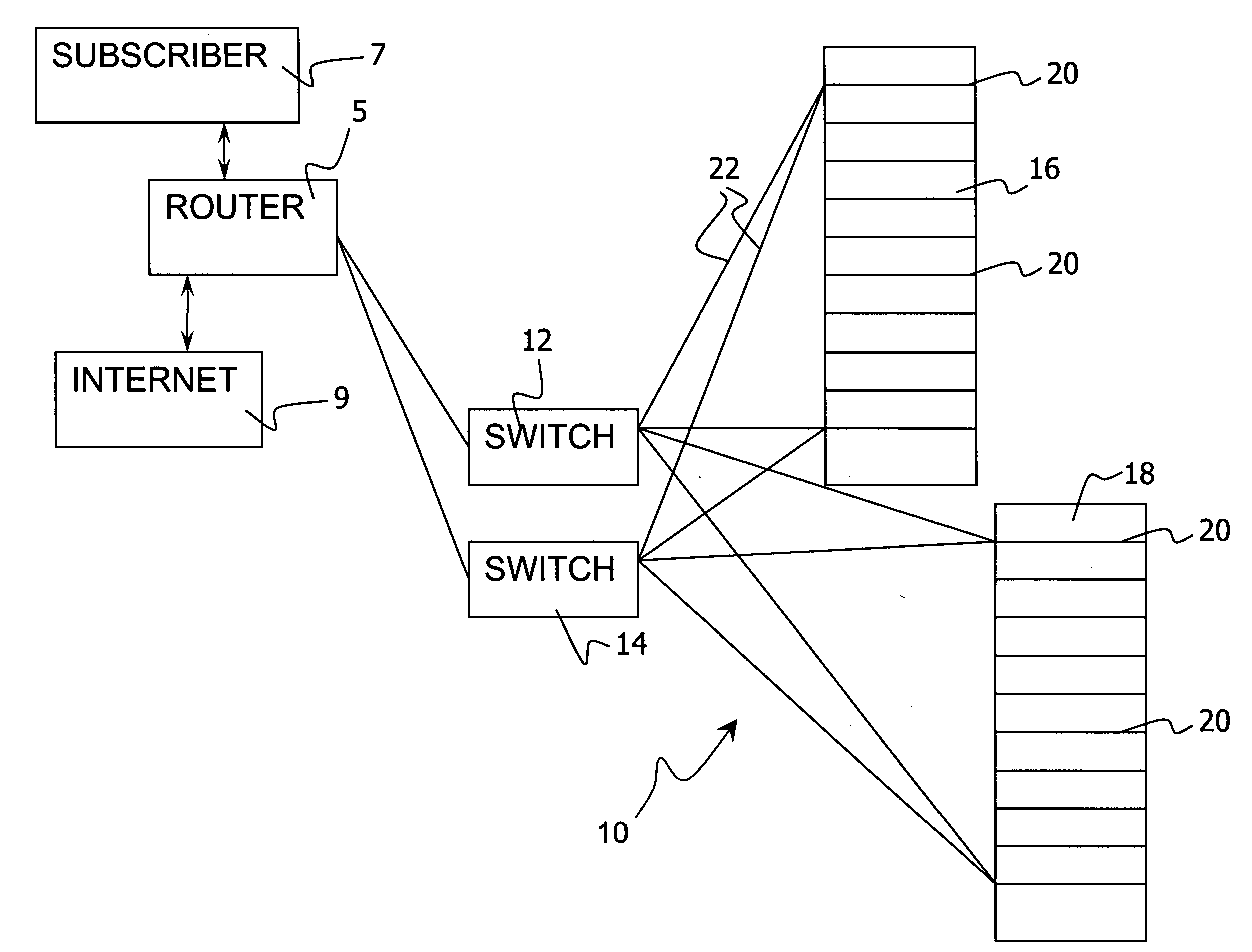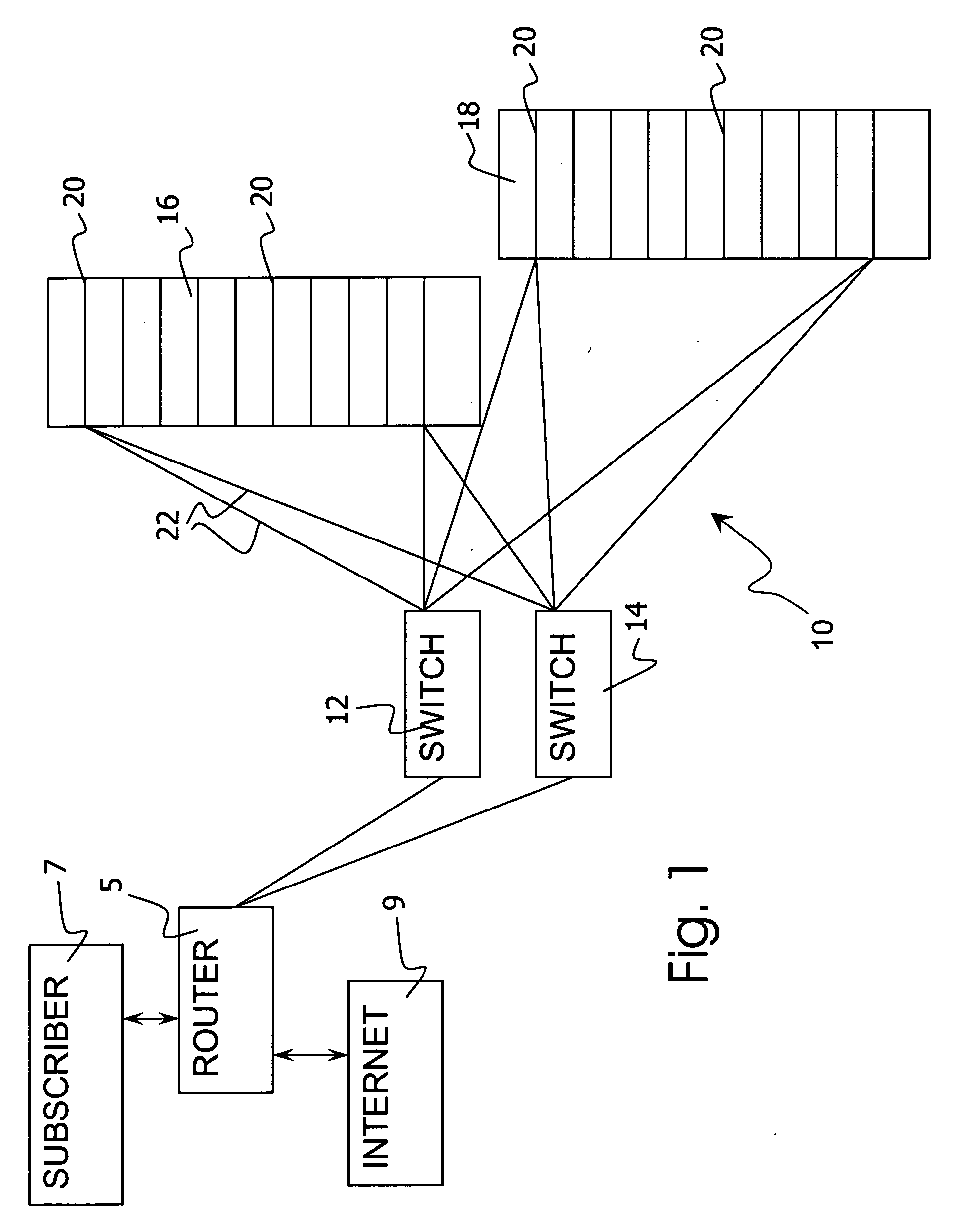HTTP extension header for metering information
a header and information technology, applied in the direction of digital transmission, data switching networks, instruments, etc., can solve the problems of difficult pre-program in operator rating engines, difficult and time-consuming for operators to internally provide the correct valuation of content, and limit the extent to which incentives can be delivered to customers in real-time. , to achieve the effect of simple protocol
- Summary
- Abstract
- Description
- Claims
- Application Information
AI Technical Summary
Benefits of technology
Problems solved by technology
Method used
Image
Examples
Embodiment Construction
[0026] Referring to the drawings in particular, the invention may be provided by a Mobile Services Delivery System (MSDS) 10 as shown in FIG. 1. The system 10 is connected to a router or switching device 5. The router 5 receives and sends packets to subscribers 7 and receives and sends packets to the Internet 9 or other sources of content. The router 5 directs packet traffic to the MSDS 10 via a switch 12 or via a set of switches 12 and 14. The switches 12 and 14 may be Ethernet switches (e.g., gigabit Ethernet). In the embodiment shown packets are inspected and / or processed with a system inspection logic 30 (see FIG. 2) using application processing engines provided by a plurality of processing blades 20 of a chassis 16. Each processing blade 20 is connected to each of the switches 12, 14 via gigabit Ethernet connections 22 or other similar connection. The preferred embodiment employs multiple Intel processor blades 20 in an Intel compact PCI chassis 16. In the embodiment of FIG. 1,...
PUM
 Login to View More
Login to View More Abstract
Description
Claims
Application Information
 Login to View More
Login to View More - R&D
- Intellectual Property
- Life Sciences
- Materials
- Tech Scout
- Unparalleled Data Quality
- Higher Quality Content
- 60% Fewer Hallucinations
Browse by: Latest US Patents, China's latest patents, Technical Efficacy Thesaurus, Application Domain, Technology Topic, Popular Technical Reports.
© 2025 PatSnap. All rights reserved.Legal|Privacy policy|Modern Slavery Act Transparency Statement|Sitemap|About US| Contact US: help@patsnap.com



